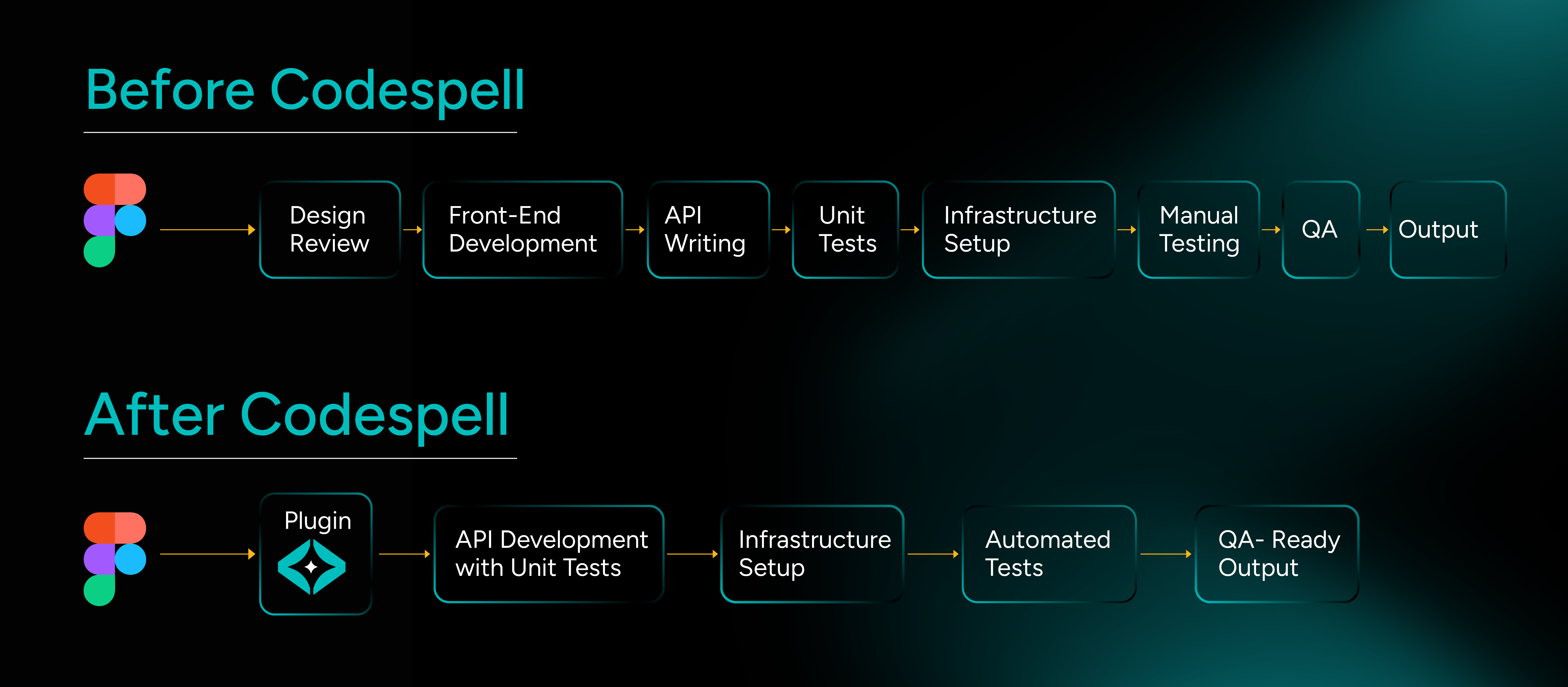December 30, 2025
Let me just say it.
I didn’t sign up to be a pixel-perfect screen detective. I signed up to build products, ship features, and solve real-world problems with code—not to spend half my week decoding someone else’s Figma file into HTML, CSS, and components.
But here we are. Every sprint starts with the same déjà vu:
“Hey, here’s the Figma link. Can you start implementing the UI?”
Which roughly translates to: “Please reverse-engineer this giant design board, figure out which version is final, guess the intended breakpoints, manually generate the boilerplate, and make sure everything works on all browsers, devices, and states. Also, don't break the design system. Also, move fast.”
Yeah, sure. Let me just clone myself and stay up till 2 AM again.
The Real Pain Behind ‘Figma to Code’
Here’s what’s happening in enterprise teams when someone says, “convert Figma to code”:
How Codespell Makes This Go Away
Codespell.ai changes the narrative. Instead of developers becoming the last-mile design interpreters, it brings automation, intelligence, and project context directly into your IDE.
Here’s how Codespell redefines Figma handoff:
- Scaffolding Done for You
The front-end skeleton is auto-generated, with working UI, routing, folder structure, and integration points.
- Design-to-Code, But Smart
It doesn't just "convert pixels." It generates production-grade code aligned with your design system, project structure, and even backend contracts.
- Context-Aware Generation
It’s not dumping dumb code. Codespell reads your workspace, references your existing patterns, and adapts outputs to match.
- Full Stack Alignment
Need APIs for that form? Codespell scaffolds the backend, API interfaces, and even test scripts.
- Time Saved = Sanity Restored
What took 3-5 days now takes a few prompts. You ship faster, cleaner, and without the soul-crushing grunt work.

What Devs Are Really Saying
“I stopped dreading the ‘design handoff’ phase. Now I just prompt Codespell and refactor. It feels like cheating.”
“It saved me 3 full dev days just setting up the initial codebase. No more boilerplate hell.”
“The first time I used the Figma plugin and saw actual clean, readable React code in my IDE, I laughed. Then I cried. It’s that good.”
TL;DR
Figma to code shouldn’t feel like digital archaeology.
You’re not a plugin. You’re a developer.
Let Codespell do the grunt work so you can build the stuff that actually matters.

.png)






.png)
.png)